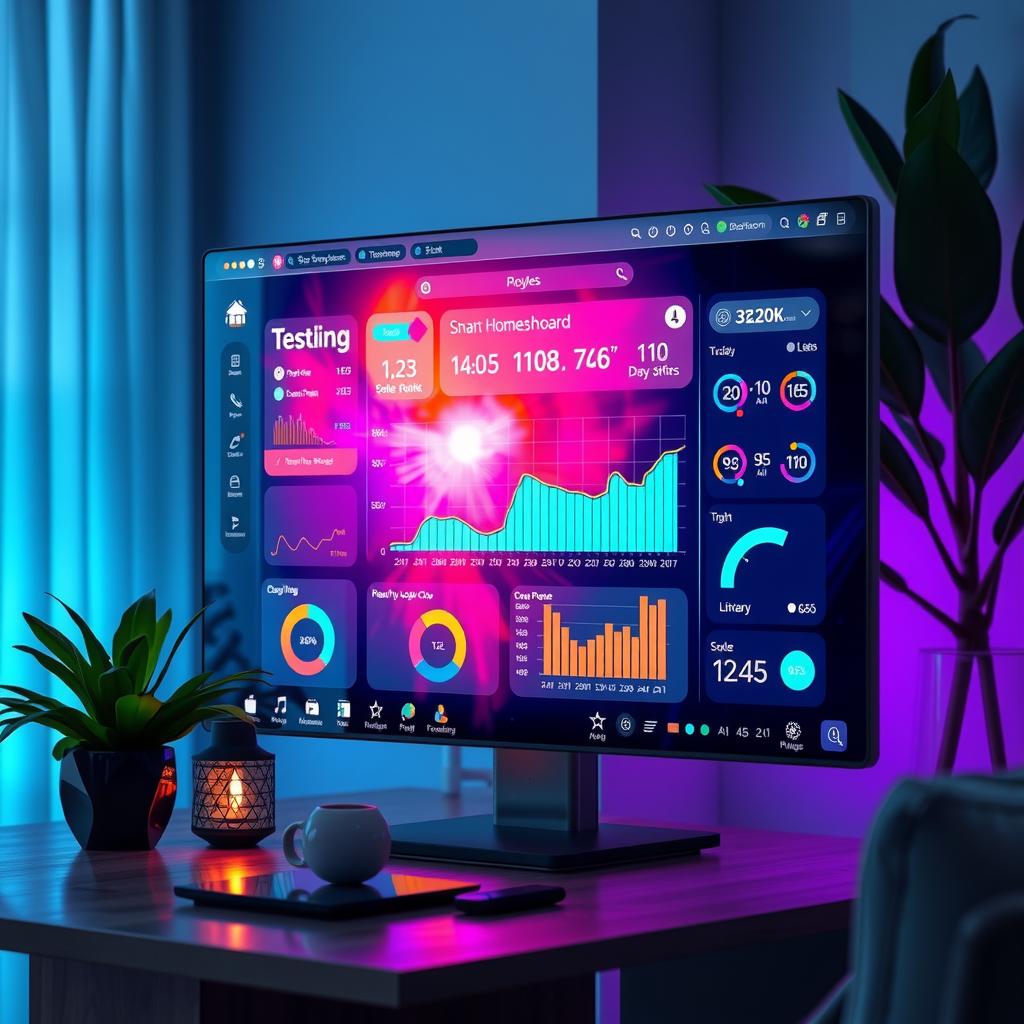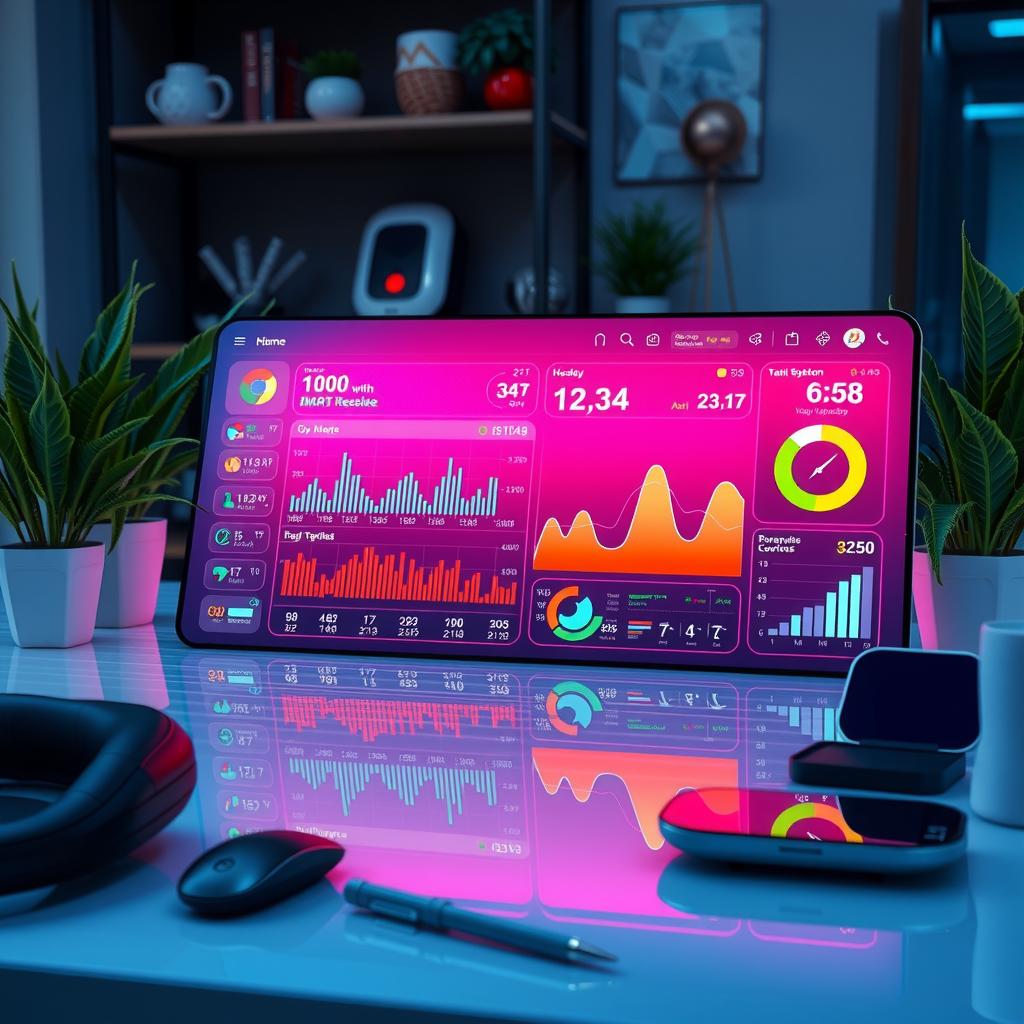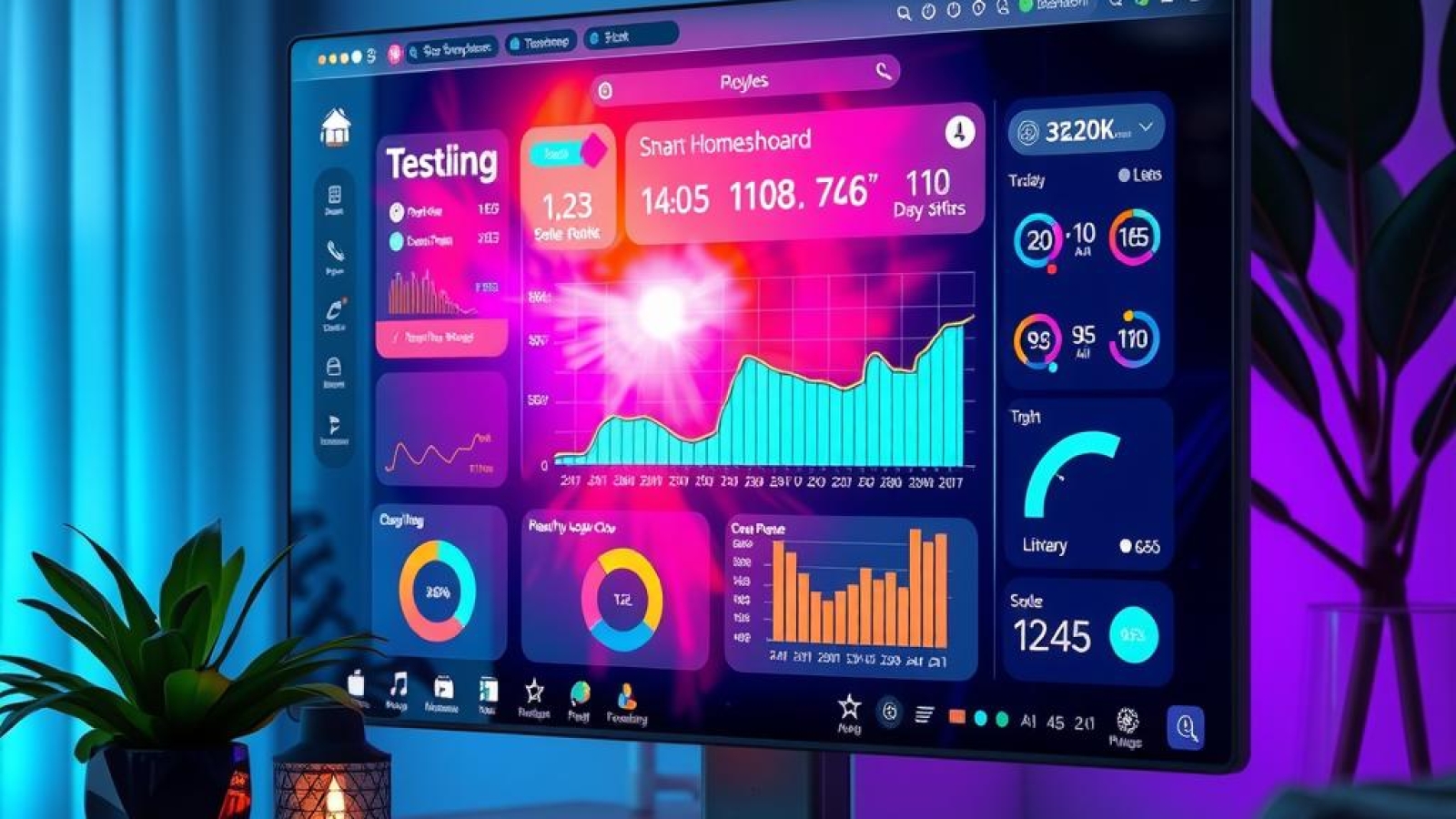In the era of smart home technology, the ability to tailor user experiences has become paramount. With countless devices and systems vying for attention in modern households, how can homeowners ensure that their smart home automation truly serves their individual needs? Enter Home Assistant, a powerful platform that empowers users with the tools necessary to create personalized environments through custom dashboards. These dynamic interfaces not only streamline control over various connected devices but also enhance data visualization, making it easier to monitor and manage every aspect of a smart home.
As users delve deeper into the world of home automation solutions, they often find themselves overwhelmed by generic interfaces that fail to highlight what truly matters. The core value of this article lies in demonstrating how Home Assistant can transform these frustrations into seamless interactions through effective user interface design. By creating bespoke dashboards tailored specifically to one’s preferences and routines, individuals gain unprecedented control over their smart homes while ensuring relevant information is always at their fingertips.
Imagine walking into your living room and instantly seeing an overview of your thermostat settings, security camera feeds, and energy usage—all without having to sift through multiple apps or screens. This is where dashboard customization plays a crucial role; it allows users not just to access data but also to visualize it in ways that are meaningful for them. Through strategic use of Home Assistant’s features and capabilities, anyone can learn how to create dashboard layouts that reflect personal priorities—be it climate control or security monitoring—and adapt as those needs evolve.
The process may seem daunting at first glance; however, with guidance on leveraging intuitive design principles alongside Home Assistant’s robust functionalities, readers will discover just how achievable —and rewarding—it is to craft these unique digital spaces. Whether one is looking for advanced data visualization tools or simply seeking an efficient way to oversee daily operations within their household system, this comprehensive guide will provide essential insights on harnessing the full potential of Home Assistant.
Ultimately, embracing custom dashboards represents more than mere convenience; it’s about creating environments where technology enhances everyday life rather than complicates it further. As we delve into strategies for building these personalized interfaces using Home Assistant, readers will uncover actionable steps towards mastering their home automation experience while enjoying newfound efficiency along the way.

Key Points:
-
Personalized Dashboards: Tailoring Interfaces for Individual Needs
The ability to create dashboard interfaces in Home Assistant allows users to personalize their smart home experience. By leveraging the platform’s features, individuals can design dashboards that reflect their specific requirements, whether it’s monitoring energy consumption or controlling lighting systems. -
Enhanced Data Visualization: Transforming Complex Information
With robust data visualization tools, Home Assistant empowers users to convert intricate data into easily digestible formats. This capability enables homeowners to quickly grasp essential insights at a glance, enhancing decision-making regarding their home automation solutions. -
Accessible Customization Options: Empowering All Users
One of the standout features of Home Assistant is its user-friendly approach to dashboard customization. Individuals with varying levels of technical expertise can navigate through the platform’s offerings, ensuring they can effectively manage and interact with their smart home ecosystem without feeling overwhelmed.

Introduction: Understanding the Importance of Custom Dashboards
Unlocking a Seamless Smart Home Experience
In today’s rapidly advancing technological landscape, the concept of smart homes is becoming increasingly prevalent. Central to enhancing this experience is the use of custom dashboards, which serve as integral components in home automation solutions. By utilizing Home Assistant, users can create dashboards that not only reflect their unique preferences but also provide quick access to vital information related to their smart devices. This level of personalization transforms how individuals interact with their home environment, allowing for a more intuitive and efficient user interface design. Through dashboard customization, homeowners can prioritize important data points such as energy consumption statistics or security alerts, leading to informed decision-making that enhances both convenience and safety.
The Role of Data Visualization Tools
Effective data visualization tools are essential when it comes to maximizing the functionality of custom dashboards within a smart home ecosystem. With Home Assistant, users have at their fingertips an array of options for creating visually appealing and informative displays tailored specifically to their needs. These tools enable homeowners to easily interpret complex data sets by presenting them in an organized manner — be it through graphs showcasing energy usage trends or real-time updates on device performance status. Such visual clarity empowers users not only by simplifying information retrieval but also by enabling proactive management strategies for smarter living environments.
Enhancing User Interaction with Dashboard Customization
Customization plays a pivotal role in optimizing user interaction within Home Assistant-powered smart homes. The ability for individuals to tailor aspects like layout, color schemes, or widget arrangements ensures that each dashboard embodies personal style while simultaneously serving functional purposes. For example, integrating weather updates alongside security camera feeds creates an all-in-one control center where critical household information converges seamlessly into one interface. As users engage with these personalized setups daily, they cultivate deeper familiarity with their systems—leading toward greater satisfaction and engagement with home automation technologies.
Creating Dashboards That Meet Individual Needs
The journey toward effective dashboard creation begins with understanding individual requirements and preferences within one’s living space; this aligns perfectly with what Home Assistant offers its users—a platform designed for adaptability and personalization in managing smart devices efficiently. By considering factors such as family routines or specific environmental conditions (like air quality), homeowners can develop bespoke interfaces that cater precisely to those dynamics over time rather than relying on generic templates offered out-of-the-box elsewhere on the market today! Consequently making it easier than ever before for anyone—from tech-savvy enthusiasts down through casual adopters—to leverage advanced features available across various connected gadgets throughout any given household context!
Conclusion: A New Era in Home Automation Design
As technology continues evolving rapidly around us daily—including developments across artificial intelligence impacting our lives—the importance placed upon leveraging tools like customized dashboards cannot be overstated! Utilizing platforms such as Home Assistant allows everyone involved—regardless if they’re seasoned pros at programming appliances themselves—or merely curious newcomers exploring possibilities previously unavailable—to empower themselves fully towards achieving optimal comfort levels inside every corner imaginable throughout modern households everywhere today!
Getting Acquainted with Home Assistant
Unlocking the Potential of Smart Home Automation
In the realm of smart home automation, Home Assistant stands out as a powerful platform that enables users to create customized dashboards tailored to their specific needs. The user interface is designed for accessibility and flexibility, allowing both beginners and seasoned enthusiasts to navigate its features effortlessly. When starting with Home Assistant, it’s essential to grasp the layout of the dashboard editor, where users can drag and drop various widgets representing devices, sensors, or automations within their smart home setup. This intuitive design facilitates effective data visualization tools that present real-time information in a visually appealing manner. By leveraging these customizable elements, one can easily monitor energy usage, adjust lighting settings, or control thermostat functions all from a centralized location.
Essential Features for Dashboard Creation
Harnessing Key Components for User Interface Design
The strength of Home Assistant lies not just in its extensive compatibility with various devices but also in its rich array of features that enhance user experience through thoughtful user interface design. Users are encouraged to explore integrations available within the platform which allow seamless connectivity between different smart devices—from security cameras to environmental sensors—creating an interconnected ecosystem conducive to efficient home management. Within this framework, customization becomes paramount; by accessing configuration options such as themes and layouts directly from the dashboard settings menu, individuals can personalize their interfaces according to aesthetic preferences or functional requirements. Moreover, utilizing YAML configurations empowers advanced users who wish to delve deeper into fine-tuning their setups and employing more intricate automations.
Custom Dashboards: Personalization at Its Best
Tailoring Your Experience with Data Visualization Tools
Creating custom dashboards within Home Assistant opens up myriad possibilities for enhancing one’s interaction with technology at home. With options like Lovelace UI—a flexible card-based system—users can curate displays that prioritize critical information while minimizing clutter. For instance, homeowners might choose cards showcasing vital statistics such as current weather conditions alongside other frequently accessed controls like lighting scenes or door locks—all arranged thoughtfully on a single screen. This level of dashboard customization not only improves usability but also enriches daily interactions by providing immediate access to essential functionalities without navigating through multiple screens.
Tips for Effective Home Automation Solutions
Maximizing Use Through Strategic Design Choices
To fully leverage what Home Assistant offers in terms of home automation solutions requires strategic design choices when creating dashboards tailored toward individual lifestyles and routines. It’s beneficial for users first assessing which aspects of their homes they interact with most frequently—whether it’s monitoring security systems during absences or adjusting climate controls based on seasonal changes—and then prioritizing those elements prominently within their custom dashboards accordingly. Furthermore, incorporating visual cues such as charts tracking historical data trends regarding electricity consumption helps inform better decision-making processes related directly back towards sustainability efforts around resource usage at home; thus encapsulating not only functionality but also broader implications concerning environmental responsibility through informed living choices facilitated by robust technology integration provided via platforms like Home Assistant.
Advanced Customization Techniques
Elevate Your Dashboard Design with Innovative Strategies
In today’s fast-paced world of smart home automation, creating a truly engaging user interface design is essential for any effective dashboard. With tools like Home Assistant, users have the opportunity to customize their dashboards beyond the basics, employing advanced techniques that not only enhance visual appeal but also improve functionality and user engagement. Custom dashboards allow users to tailor their experience according to personal preferences and needs, making it easier to monitor and control various aspects of their smart homes seamlessly. Effective dashboard customization begins with understanding data visualization tools; these tools enable users to represent complex datasets in an easily digestible format. By utilizing charts, graphs, and interactive elements within Home Assistant, designers can transform raw data into compelling narratives that drive action.
Moreover, enhancing user interaction is crucial for maintaining interest in any digital interface. Incorporating features such as dynamic updates or personalized notifications can keep users informed about significant changes in their environment without overwhelming them with information. For instance, integrating real-time alerts related to home security systems via the customized dashboard fosters a sense of control and safety among homeowners while ensuring they remain engaged with the platform regularly. Furthermore, aligning the design principles with usability standards helps create intuitive navigation paths that empower users rather than frustrate them.
To maximize effectiveness when creating dashboards using Home Assistant, practitioners must consider aesthetic aspects alongside technical functionalities—colors should be harmonious yet distinct enough to guide attention where needed most effectively. Clear labeling combined with strategic placement ensures vital information stands out at a glance while supporting seamless interaction experiences across devices ranging from smartphones to tablets or desktops alike.
Ultimately, by embracing sophisticated customization options available through platforms such as Home Assistant, individuals can elevate their smart home experience significantly—leading not just toward better management capabilities but fostering greater satisfaction overall amongst end-users who navigate these environments daily.
Transforming Data into Insightful Experiences
Discover Practical Tips for Enhanced User Engagement
The modern approach towards custom dashboard creation requires more than merely displaying information; it demands transforming data into insightful experiences tailored specifically for each user’s context within smart home automation systems powered by technologies like Home Assistant. When embarking on this journey of enhancement through innovative strategies focused on both aesthetics and practicality—one must first analyze what key metrics matter most before delving deeper into designing visually appealing layouts geared towards facilitating comprehension quickly.
An important aspect of this transformation involves leveraging appropriate data visualization tools that resonate well with target audiences while enabling swift insights extraction from otherwise complex datasets inherent in automated environments managed via platforms such as Home Assistant. This translates directly into actionable intelligence derived from sensor readings or activity logs presented dynamically across customizable panels designed thoughtfully around individual preferences regarding layout structure—a practice beneficially paired alongside consistent testing phases aimed at refining designs iteratively over time based upon collected feedback garnered during real-world usage scenarios encountered daily by consumers navigating these interfaces both intuitively yet systematically.
Furthermore—the integration process itself can benefit greatly from establishing clear connections between diverse components utilized throughout various operational stages pertaining specifically back toward achieving desired outcomes aligned strategically along pre-defined objectives set forth earlier during initial planning sessions held prior launching new enhancements crafted meticulously over recent months leading up until now! As one continues exploring advanced customization methodologies offered freely today—it becomes apparent how integral proper execution remains tied closely together when aiming successfully reach intended goals outlined initially surrounding overall performance improvement achieved collectively through collaboration efforts uniting multiple stakeholders involved actively participating equally every step along way!
By focusing on these core principles underlined above consistently applied practices driven forward continuously further enhances potential realized fully harnessed ideally resulting eventually providing maximized value extracted ultimately benefiting all parties concerned proactively working diligently towards shared aspirations envisioned ahead long-term sustainability prosperity cultivated nurtured appropriately ongoing basis henceforth moving forward confidently assured future successes await those willing embrace challenges head-on courageously unfazed relentless pursuit excellence unwavering commitment striving ever higher benchmarks established firmly foundation laid down previously built strong robust framework capable enduring test times endured faithfully persistently onward always aspiring greatness achieved collaboratively united purposefully directed meaningful progress made possible day after day month after month year after year ahead eagerly anticipated warmly welcomed enthusiastically embraced wholeheartedly recognized duly celebrated joyously cherished forevermore!
Frequently Asked Questions:
Q: What is Home Assistant and how can it enhance my smart home experience?
A: Home Assistant is a powerful platform that allows users to manage and automate their smart home devices effectively. By utilizing its features, users can create custom dashboards tailored to their specific needs, enhancing the overall user interface design and providing an intuitive way to visualize data from various home automation solutions.
Q: Do I need technical skills to create dashboards in Home Assistant?
A: No extensive technical knowledge is required to create dashboards in Home Assistant. The platform offers robust data visualization tools that simplify the customization process. Anyone can navigate through these features with practical steps provided in guides, making dashboard customization accessible for all skill levels.
Q: How does customizing my dashboard improve the management of my smart home?
A: Customizing your dashboard within Home Assistant allows you to streamline access to critical information at a glance. It helps transform complex data into easily understandable visuals, enabling quick monitoring of essential aspects such as energy usage and security systems, thus enhancing your overall experience with smart home automation.

Add a Comment